


xxxxxThe Russian writer Leo Tolstoy wrote a large number of novels and short stories, and he was also successful as a dramatist, but he is mostly remembered today for his historical epic War and Peace, published in 1869, and his psychological novel Anna Karenina, completed in 1877. These two masterpieces, set in Russia in the early 19th century and produced on a large scale, marked him out as one of the greatest authors of realistic fiction. His descriptive genius and his detailed character studies, painstakingly developed, have never been surpassed. His brilliant short stories included The Death of Ivan Illych and Master and Man, and he gained fame as a dramatist with The Power of Darkness in 1888. Much of his characterisation, particularly in Anna Karenina, revealed his own, frantic search for the meaning of life, and this obsession brought about a profound spiritual crisis in the late 1870s. Deeply troubled by his misspent youth and what he saw as his meaningless existence, he turned to religion for comfort and support. Discarding the “false teachings” of the Orthodox Church, he devised his own religious doctrine, based on a revision of traditional Christian beliefs. He advanced his ideas in numerous tracts and essays -
LEO NIKOLAIEVICH TOLSTOY 1828 -
Acknowledgements
Tolstoy: detail, by the Russian painter Ilya Repin (1844-
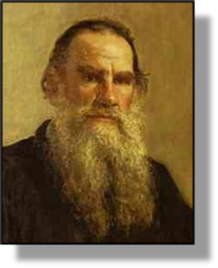 xxxxxIt was in 1869 that the Russian novelist Leo Tolstoy produced his historical epic War and Peace, a mammoth work which, with his novel Anna Karenina, completed eight years later, marked him out as one of the world’s greatest authors of realistic fiction. No writer, before or since, has shown such descriptive genius and such extraordinary depth of characterisation on so vast a scale. He was also a successful dramatist and, in his later years, became known internationally as a profound social and moral philosopher, obsessed with the search for the meaning of life.
xxxxxIt was in 1869 that the Russian novelist Leo Tolstoy produced his historical epic War and Peace, a mammoth work which, with his novel Anna Karenina, completed eight years later, marked him out as one of the world’s greatest authors of realistic fiction. No writer, before or since, has shown such descriptive genius and such extraordinary depth of characterisation on so vast a scale. He was also a successful dramatist and, in his later years, became known internationally as a profound social and moral philosopher, obsessed with the search for the meaning of life.
xxxxxTolstoy was born into a noble family at Yasnaya Polyana, about 130 miles south of Moscow, the family estate where he was to spend much of his life. He had lost both parents by the age of nine and, together with two of his sisters, was brought up by an aunt. He attended Kazan University from 1843, but he showed little aptitude in his study of oriental languages, and he fared no better when he turned to the study of law. He left the university four years later without gaining a degree, but by then he had read books by a variety of writers -
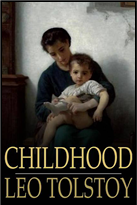
xxxxxAt first, he attempted to manage and improve the family estate, but, meeting with little success, he soon gave himself over to a life of drinking, gambling and debauchery in the flesh pots of Moscow and St. Petersburg, racking up huge debts as a result. In 1851, however, having become increasingly dispirited by this “completely brutish life”, he joined his brother’s regiment in the Caucasus and, two years later, found himself defending Sevastopol during the Crimean War. The “meaningless carnage” he saw there convinced him of the futility of war and made him a confirmed pacifist, but this military action also provided valuable material for his career as a writer. This began with his autobiographical work Childhood, written while serving in the Caucasus and published in 1852. This nostalgic, somewhat fictionalised account of his early days was extremely well received and led to two sequels, Boyhood in 1854, and Youth three years later.
xxxxxBy this time he had left the army and was adding to his fame by the publication of the first of three sketches entitled Tales from Sevastopol. This graphic account of the siege of this Crimean naval base painted a grim, un-
xxxxxWith his literary career now well established, in 1857 he embarked on three years of travel around Western Europe. He was appalled by the selfishness and gross materialism he found amongst the bourgeoisie of the countries he visited, but, having acquired an interest in education from his reading of Rousseau, he also looked at a number of elementary schools and was impressed by the novel idea of the kindergarten, introduced earlier by the German Friedrich Froebel and being employed in some areas. On returning to Russia in 1860 he founded a school for peasant children on his estate but, based on the idea that the children enjoyed complete freedom as to whether they attended and what subject they studied, it did not last much more than a year. However, during this period he wrote a number of textbooks, stories and fables, and produced a magazine to advance his liberal ideas on education.
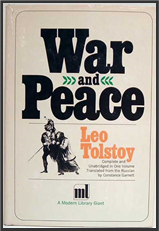
xxxxxHis marriage to the young Sonya Behrs in 1862 brought a period of contentment. They lived at Yasnaya Polyana (meaning “Clear Glade”) and for the next twenty years he managed the estate and enjoyed the country way of life. They had 13 children, ten of whom survived infancy. This period, the 1860s and 1870s, also proved to be his most productive as a novelist. He produced The Cossacks in 1863, a short story much admired for its character study and the beauty of its text, and this was followed by his two best known works, War and Peace, produced in 1869, and Anna Karenina, completed in 1877.
xxxxxThe historical epic War and Peace, set against the background of the Napoleonic Wars just before and after Napoleon’s invasion of Russia, gives vivid descriptions of the chaotic, bloody battles of Austerlitz and Borodino, and contains Tolstoy’s personal assessment of the major historical figures of the period, including Napoleon and Tsar Alexander I. Its true value, however, lay in its painstakingly detailed depiction of Russian society at this time, seen through a panoramic but nonetheless exceedingly close study of five aristocratic families. A work of vast proportions both in its scope of events and the 500 or so characters who throng its pages, it is noted above all for the quality of its realistic description and for its deep psychological insight into its leading personalities, historical or fictional. It contains no traditional plot -
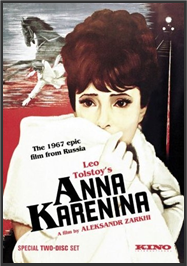
xxxxxAnna Karenina also provided a wide view of Russian society, but its highly realistic story, weaved around the lives of three families, was more clearly defined and developed, and the several plots it contains show a penetrating study of characters assailed by social and moral pressures. The beautiful heroine, tormented and driven to suicide by her marital infidelity, is brilliantly drawn, as is Levin, a man who, like Tolstoy himself, is for ever troubled by the meaning of life and how it should be lived. Superbly constructed and, by its very nature, pessimistic in tone, it has come to be regarded, by dint of its preoccupation with self-
xxxxxIn the late 1870s, however, Tolstoy underwent a profound spiritual crisis, signs of which had already found voice through the troubled characters in Anna Karenina and, to a lesser extent, in War and Peace. Tormented by constant doubts as to the purpose of life, and appalled by his misspent youth and what he saw as his own selfish, meaningless existence, his A Confession, completed in 1882, revealed a deep rooted dissatisfaction with his own way of life. In his frenzied state of mind he at one time contemplated suicide, but on turning to religion he found a saving measure of comfort and inspiration. Accusing the Russian Orthodox Church of being corrupt and false in its teaching, he developed his own religious doctrine as a means of self improvement. Based on a revision of traditional Christian beliefs, he preached universal love, the renunciation of violence and wealth, and a return to the simple life -
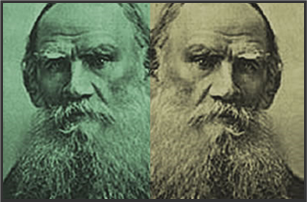 xxxxxOver the next twenty years or so Tolstoy produced numerous tracts and essays to spell out his personal code of moral conduct, formed in an attempt to examine and explain the relationship between life and death. These included The Gospels in Brief, What I Believe, How Much Land Does a Man Need?, What Then Must We Do?, On Life and Death, and The Kingdom of God is Within You, a work setting out a new society based on a literal interpretation of the Christian message. And to this period belongs a number of brilliant, fictional works with a moral purpose, such as the short stories The Death of Ivan Ilych and Master and Man, both concerned with spiritual conversion, his novel The Kreutzer Sonata, a drama centred around a loveless marriage, and his tragedy The Power of Darkness, a play wherein lust leads to violence. His last novel, Resurrection, in which he accused the Russian Orthodox Church of false doctrine, led to his excommunication and further government disapproval in 1901, but by then his doctrine had attracted a large number of disciples, Yasnaya Polyana had become a place of pilgrimage, and Tolstoyism had gained worldwide recognition.
xxxxxOver the next twenty years or so Tolstoy produced numerous tracts and essays to spell out his personal code of moral conduct, formed in an attempt to examine and explain the relationship between life and death. These included The Gospels in Brief, What I Believe, How Much Land Does a Man Need?, What Then Must We Do?, On Life and Death, and The Kingdom of God is Within You, a work setting out a new society based on a literal interpretation of the Christian message. And to this period belongs a number of brilliant, fictional works with a moral purpose, such as the short stories The Death of Ivan Ilych and Master and Man, both concerned with spiritual conversion, his novel The Kreutzer Sonata, a drama centred around a loveless marriage, and his tragedy The Power of Darkness, a play wherein lust leads to violence. His last novel, Resurrection, in which he accused the Russian Orthodox Church of false doctrine, led to his excommunication and further government disapproval in 1901, but by then his doctrine had attracted a large number of disciples, Yasnaya Polyana had become a place of pilgrimage, and Tolstoyism had gained worldwide recognition.
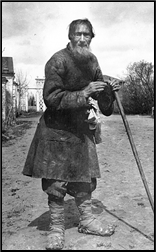
xxxxxBut this search for Christian goodness and the regeneration of the inner man brought only limited comfort. In accordance with his doctrine, he handed over his property and personal possessions to his wife and children -
xxxxxTolstoy showed throughout his works, and particularly in War and Peace and Anna Karenina, that he was a supreme master of realistic fiction, and a descriptive genius of world stature. And he brought to his detailed character studies a psychological insight which, given the enormous scale of his subject matter, has never been surpassed. In addition, apart from his international success as novelist, short story writer and dramatist, he gained in his later years widespread renown as a moral and social thinker of repute. Among those writers who paid tribute to his abundant and varied skills were not only his fellow countryman -
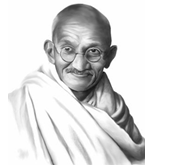
xxxxxHis novels had a profound influence on subsequent literature, and his moral teaching, containing as it did the idea of passive resistance to evil -
xxxxxIncidentally, an interesting work by Tolstoy was his What Is Art?, an essay in which he condemned not only the works of writers like Shakespeare and Dante, and composers such as Beethoven and Wagner, but also much of his own fiction. Art, he argued, should not be complex, designed only for the cultured élite, but simple to understand and morally uplifting, seen at its best in folk songs and the early bible stories. ……
xxxxx…… The royalties from his last novel, Resurrection, published in 1899, went to help the Doukhobors, the members of a small Christian sect in the Caucasus who, because of their pacifism, were being persecuted by the government for refusing to take part in military service. Tolstoy’s considerable support enabled some 7000 of them to take up a new life in a remote area of Canada -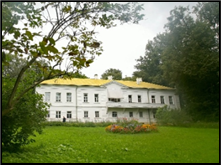 oba and Saskatchewan.
oba and Saskatchewan.
xxxxx…… In 1941, during the Second World War, the family estate at Yasnaya Polyana, where Tolstoy was born, lived and was buried, was looted by German troops. Today it houses the Tolstoy Memorial Museum in honour of his life and works. This includes the house and its library of some 22,000 books.
Vb-


